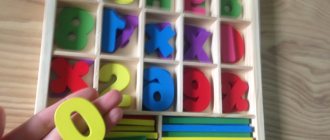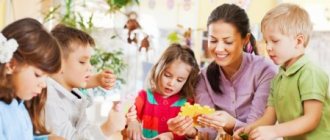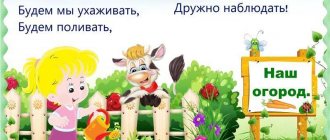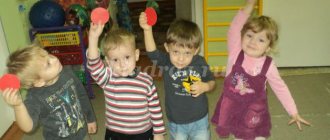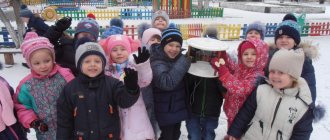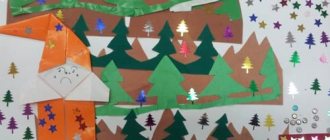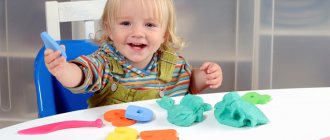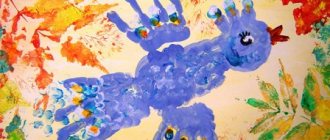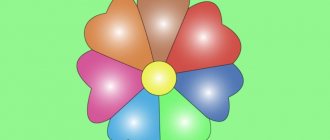MAGAZINE Preschooler.RF
Short-term project in the middle group “Winter fun”Prepared by: teacher Municipal budgetary preschool educational institution kindergarten No. 36 of a general developmental type Kamyshnikova L.N. Golitsyno 2021
Type of project: creative, educational and research
Duration: short term
Project participants: teachers, children 4-5 years old, parents
Project implementation period: short-term (from December to January).
Relevance of the project: Health is an invaluable asset of every person. In preschool childhood, the foundation of a child’s health is laid, his intensive growth and development occur, basic movements, posture, as well as the necessary skills and habits are formed, basic physical qualities are acquired, and character traits are developed, without which a healthy lifestyle is impossible. If a child’s physical activity is insufficient (hypodynamia), a deterioration in the development of motor function and a decrease in the child’s physical performance inevitably occur. The decisive role in the formation of personal potential and promotion of a healthy lifestyle belongs to the family. Today it is important for us, adults, to form and maintain an interest in improving the health of both ourselves and our children. The problem of deteriorating health of the younger generation is becoming increasingly urgent. Currently, in Russia, the overall level of deviations in the health status of children increases by 6.7% annually. Due to the way of modern life, most adults have a weak motivational aspect of physical activity and a low level of ideas about a healthy lifestyle, about sports and the Olympic movement, about winter sports, games and fun. Therefore, we decided to carry out the “Winter Fun” .
Project goal: Creating conditions for expanding children's understanding and knowledge about winter and winter fun, introducing children and parents to a healthy lifestyle through winter fun, entertainment, games, expanding children's horizons, knowledge about the safety rules for children on a winter walk.
Project objectives:
- Expanding and deepening children's knowledge and ideas about the winter season.
- Expanding children's understanding of winter games and fun.
- Forming an idea of the relationship and interdependence of living and inanimate nature.
- Formation of an active life position in matters of health promotion, mastering healthy lifestyle skills.
- To introduce the phenomena of inanimate nature (snow, blizzards, frosts, strong winds), the properties of snow (white, fluffy, crunchy).
- Development of observation, cognitive activity, initiative.
- Formation of the ability to convey the beauty of nature in visual activities, select colors, and develop aesthetic perception.
- Development of coherent speech, clarification, enrichment and activation of vocabulary;
- Promote the formation of cooperation in parent-child relationships, attracting the attention of parents to the issues of creating a healthy environment in the family.
- Raising children's caring attitude towards nature.
Form of the final project event:
Winter outdoor games marathon: “Winter Adventures”
(Appendix No. 11).
Expected outcome of the project:
At the end of the project, children will expand their understanding of winter games and fun. Get involved in a healthy lifestyle through winter fun, entertainment, and games. Children will be able to establish the dependence of the life of plants and animals on changes in nature. Exploration and knowledge of natural objects promotes mental development, logical thinking, and vocabulary will be replenished and expanded. In addition, the perception of nature will help develop such qualities as cheerfulness, emotionality, the ability to admire the beauty of the surrounding nature and a sensitive attitude towards all living things.
Forms of project implementation: observations, conversations, situational conversation, perception of fiction, viewing photographs and illustrations, outdoor and musical games, consultations (for parents).
Methods:
- Verbal: conversation, perception of fiction, teacher's story, riddles.
- Visual: looking at photographs and illustrations, paintings, books.
- Practical: productive activities, musical activities.
- Gaming: didactic games, outdoor games.
Project implementation stages:
Stage 1: Preparatory
- defining the theme and objectives of the project; relevance of the problem; drawing up a plan for the main stage of the project.
- selection of methodological, children's fiction, musical works
- development of OOD cycles
- selection of materials and attributes for gaming activities
- informing parents about the creative project and inviting them to participate in the project.
2. Contents of the project (main stage - activity)
Implementation of the project in direct educational activities through educational areas:
Cognitive development
| OOD "Winter Fun" Goal: Creating conditions for children to develop ideas about winter sports (Appendix No. 1). OOD (Construction) “Snow Fortress”. Goal: Creating conditions for the formation of spatial-temporal ideas in children, the ability to combine buildings with a single plot, and play them together. D/games used in the OOD “The World Around us”: “Who is doing what?”; "Winter Fun"; “We are walking in the garden”; “Count one, two, three”; “What did the artist forget to draw?”; “What first, what then”; “Pick a sign”; “When does this happen?”; "Winter summer"; "Winter words" Educational games used in educational activities for the formation of mathematical concepts: “Snowballs”; "Sort by color"; "Cooks"; “Color it!”; “Get things in order”; “Stocks for the winter”; "The fourth wheel"; “What’s missing?”; "Find differences". Experiments: “What kind of snow is there?; "Snow - water - ice"; “How does snow become water?”; “How to warm your hands?”; “Why do Santa Claus and Snow Maiden need fur coats?”; “Which is faster?” Experimentation: “Snowflakes on a mitten, on a hand”; “Multi-colored pieces of ice”; "Interaction of water and snow." Observations: weather, wind, sky, sun, blizzard (from the window), snowfall, snowflakes, snow (white, cold, wet), snowdrifts, icicles, birds (sparrows, tits, bullfinches, pigeons), passersby (how dressed, behind the trees, with the labor of a janitor. Observation of natural phenomena typical of winter. | |
| Speech development | OOD "Journey to the Winter Forest". Goal: Creating conditions for children to develop the ability to correlate the winter landscape they see with listening to a literary work. OOD “Compilation of a descriptive story based on the painting “Children on a walk.” Goal: Creating conditions for children to develop the ability to write a short descriptive story based on a picture (Appendix No. 2). OOD “Memorizing the poem by Y. Akim “First Snow”. Goal: Creating conditions for the development of intonation expressiveness in children when reading poetry. OOD “Retelling the story “The Snowman”. Goal: Creating conditions for developing children’s ability to retell literary works. OOD Fairy Tale by V. Kozlov “Winter's Tale”. Creating conditions for developing in children the ability to emotionally perceive the content of a fairy tale. Games for speech development: “Listen and guess”; "Correct mistakes"; “Call me kindly”; “One is many”; “Say it with the word - winter”; “Finish the sentence”; “A bunny is sitting at the edge of the forest...” D/games: “Guess what appeared”; “Name it”; "Find a Pair"; "Guess what's changed"; “Who knows how to do what”; “Choose words-signs”; “Choose words - actions”; “What did the artist forget to draw?”; "What's first, what's next." Articulation warm-ups: “The Journey of the Merry Tongue.” Breathing exercises: “Winter wind”; “Blow on a snowflake. OOD Reading fiction: poems about winter: Ya. Akim “First Snow”; V. Artyukhova “White Grandfather”; A. Fet “Mom! Look out the window..."; S. Drozhzhia “Walking the street...”; N. Nekrasov “It is not the wind that rages over the forest...”; I. Surikov “Winter”; A. Yashin “Feed the birds in winter”; O. Vysotskaya “Christmas tree”; riddles, proverbs, sayings; about animals and signs of winter. Prose: N. Nosov “On the Hill”; N. Sladkov “Not Hearing”. Fairy tales: Russian folk “Snow Maiden”, Russian folk “Zimovye”; “Sister Fox and Gray Wolf”; "Mitten"; T. Egner “Adventures in the forest of Elki-on-Gorka”; V. Kozlov “Enchanted Girl”. Goal: To cultivate an emotional and imaginative perception of a literary work; learn to evaluate the actions of heroes; consolidate the idea of the season “Winter”. Development of creative imagination, auditory and visual memory, expressiveness of speech. |
| Social and communicative development | OOD "Winter Walk". Goal: Creating conditions for children to develop the ability to correlate the winter landscape they see with listening to a literary work. OOD "Safety on Ice". Goal: To create conditions for children to develop an understanding of the rules of safe behavior on water during the cold season (Appendix No. 3). Examination of plot paintings, conversations on the topic: “Winter in the forest”; “Safe behavior in winter in the city, in the forest, on rivers”; “Why do we need a feeder?”; “Winter and children. Winter fun"; “If you want to be healthy...”; "Dangerous Ice" Examination of illustrations and paintings: “Artists about winter”; “Animals in winter”; "Winter Fun"; "Winter landscape"; "Sasha and the Snowman"; "Winter forest". |
| Artistic and aesthetic development | OOD (Drawing) “Winter Friend”; "Snowman and Christmas tree"; "Christmas balls". (Appendix No. 4). OOD (Modeling): “Snowman”; "Christmas tree decoration." OOD (Application): “Snowflake”; “Snowballs” (Appendix No. 5). Musical works (listening): “About the New Year”; “If only there were no winter”; "Santa Claus"; "The Forest Raised a Christmas Tree"; "Little Christmas tree" Dramatization of the fairy tale "Wintermovie". Russian folk game "Forest Dwarf". Musical game: "Santa Claus". |
| Physical development | Physical education; "Bunny"; “Everyone has their own home”; "Snowflakes". Game exercises: “White snow is fluffy”; "Catch a snowflake." Outdoor games: “Frost - red nose”; "Two Frosts"; "Snowflakes and the Wind"; "Birds in Nests"; “Roll a snowball”, “Hit the hoop (or ball)”; "Skiers"; "Snow Fight"; "The Fox and the Hares"; “I’ll freeze it.” Snowball games. Sledding downhill on ice sleds. Preparing for the winter holiday Marathon of winter outdoor games “Winter Adventures” (Appendix No. 11) in physical education classes. Goal: Creating conditions for the development of motor activity in children, creating the belief that winter games contribute to a joyful mood, improved health and physical fitness. |
| Labor activity | Snow removal at the site for the winter games marathon. Goal: Creating conditions for the formation in children of a responsible attitude to work, the ability to carry out collective assignments. “Building a snow slide for a doll.” Goal: To create conditions for the formation of children’s habits of work effort, the development of the ability and desire to provide all possible assistance to a friend, to teach him what he himself can do. |
Working with parents:
Information material “For children about winter” (Appendix No. 6).
Memo for parents “Rules for a safe walk” (Appendix No. 7).
Consultations:
“Snow fun” (Appendix No. 8).
“Winter injuries” (Appendix No. 9).
“Prevention of influenza” (Appendix No. 10).
– analysis of the project results (conducting a winter games marathon, organizing an exhibition of children’s works).
PROJECT RESULTS:
Results of the project:
1. Exhibitions of children's drawings, applique and modeling works.
2. Winter games marathon “Winter Adventures”.
3. Children:
- — During the implementation of the project, we came to the conclusion that such games, fun, and productive activities unite children with common impressions, experiences, and emotions. Children's interest and desire to engage in winter sports, take an active part in outdoor games and fun while walking have increased significantly.
- — Knowledge has increased about the importance of a healthy lifestyle and the rules of safe behavior when walking.
- — Children’s speech activity intensified (using artistic expression and educational conversations).
- — In order to increase interest in winter sports and games, it is necessary to continue systematic work in this direction through the creation and implementation of new joint projects and the use of an integrated approach in this direction.
4. Teachers:
- — We have created conditions for increasing the professional competence of teachers in matters of interaction with parents of students.
- — We have created conditions for increasing the level of pedagogical culture of parents, their interest in the upbringing and development of children.
- — We created conditions for the formation of trust and partnership between subjects of the educational space.
- — We created conditions to provide space for personal growth of participants and create a creative atmosphere.
Bibliography:
- 1. Anufrieva L. General physical training of children on a walk // Preschool education. 1996. No. 2.
- 2. Raising children in the middle group of kindergarten / Comp. G.M. Lyamina. M, 1982.
- 3. Dybina O.B. Classes on familiarization with the outside world in the middle group of kindergarten. - M.: Mosaika-Sintez, 2010.
- 4. Ivanova A.I. Naturally - scientific observations and experiments in kindergarten. M, 2007.
- 5. Osokina T.A., Timofeeva E.A. Games and entertainment for children outdoors. M., 1981.
- 6. Perelman Ya.I. Entertaining tasks and experiments. Ekaterinburg, 1995.
- 7. Ryzhova N.A. Environmental education in kindergarten. M., 2001.
| < Previous | Next > |
